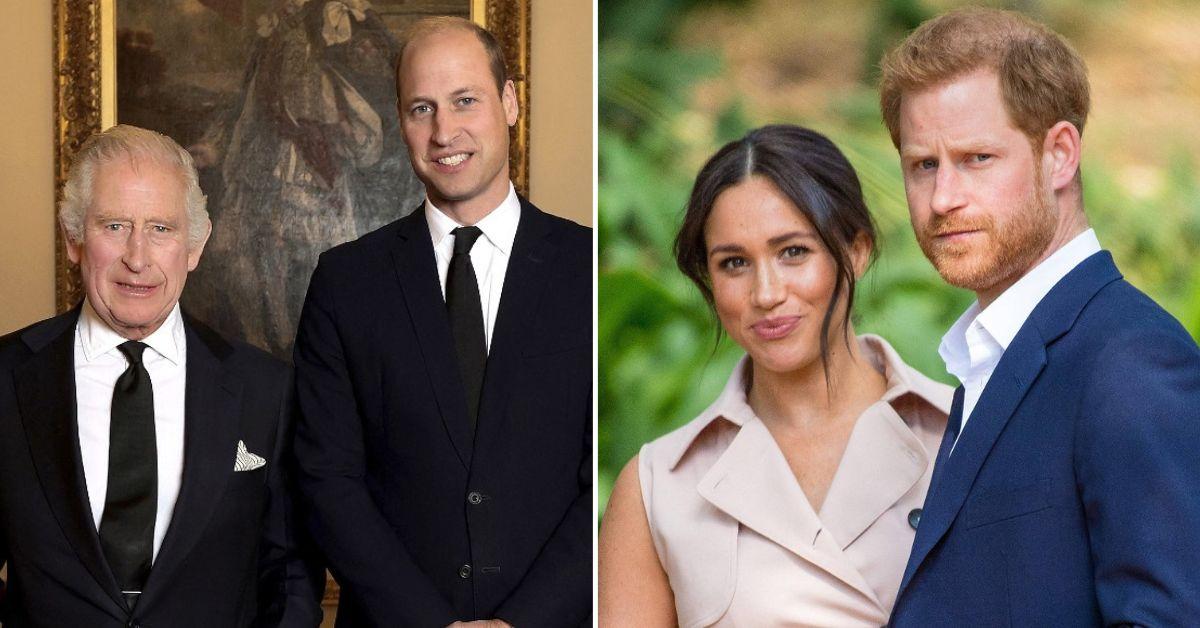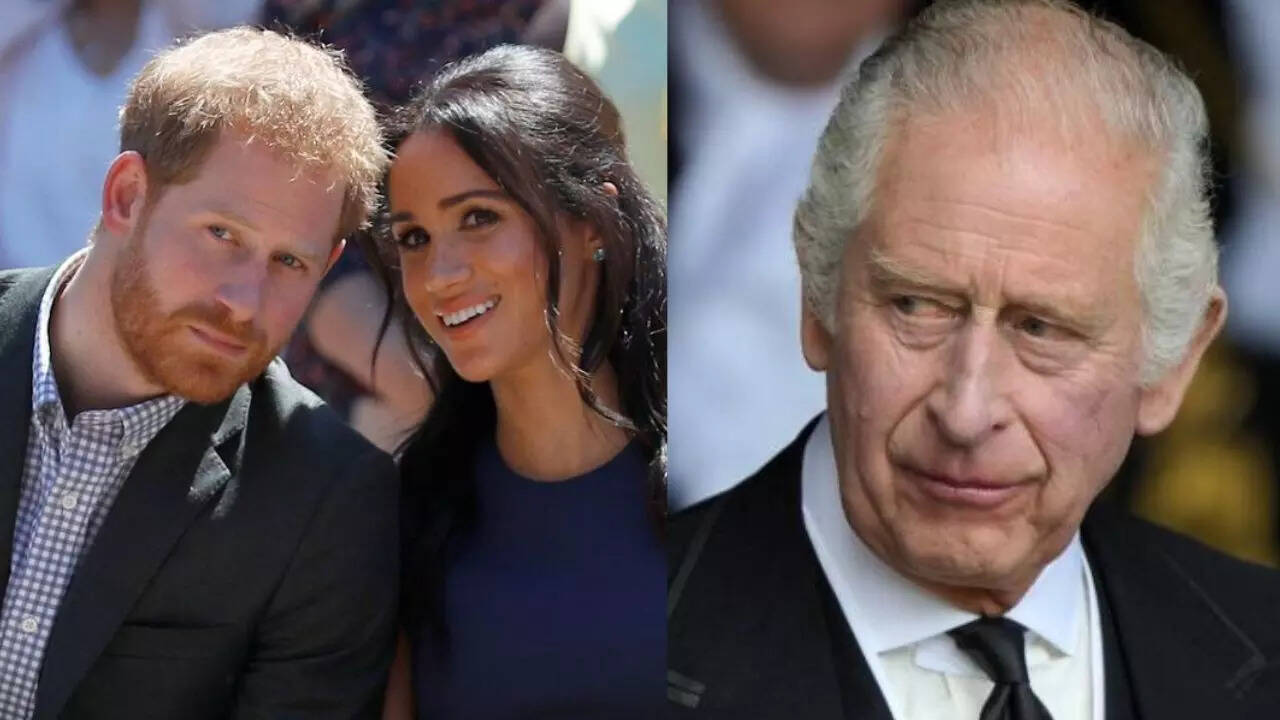Prince Harry & Meghan Markle Cast as Villains in the Royal Rift with King Charles and Prince William

For years the British monarchy has been defined by pomp, duty, and a carefully maintained sense of unity. Yet in recent times, that façade has been shattered by an unrelenting family rift. At the center of this storm stand Prince Harry and Meghan Markle, once celebrated as the modernizers who could rejuvenate the House of Windsor. Today, however, they are increasingly portrayed as the villains in an ongoing royal feud that has tested King Charles III and Prince William to their limits.
A Break from Tradition

The fracture began in 2020 when Harry and Meghan announced they would step back from royal duties, a decision that shocked Buckingham Palace and the public alike. Initially framed as a move toward independence, the exit soon earned the moniker “Megxit” and became the symbol of royal division. Critics argue that rather than quietly carving out a private life, the Duke and Duchess of Sussex turned their departure into a global spectacle—complete with prime-time interviews, podcasts, documentaries, and book deals.
By airing grievances publicly, they ignited accusations of betrayal. King Charles, newly burdened with the Crown, found himself juggling national responsibility with the anguish of an estranged son. Prince William, the heir apparent, was forced into the role of defender, not just of his father but of the very institution their family embodies.
From Hope to Hostility

When Harry and Meghan married in 2018, there was immense hope. Meghan was the fresh face the monarchy seemed to need—an American actress, biracial, articulate, and poised. Crowds cheered, commentators predicted a new era of inclusivity. But the fairy tale quickly curdled into something darker. By 2021, Harry and Meghan’s bombshell interview with Oprah Winfrey painted the royals as cold, indifferent, and even racially insensitive. The revelations shocked the world but devastated the monarchy’s carefully constructed image.
In the public eye, the Sussexes shifted from glamorous modernizers to relentless critics. Every new media project seemed to carry another barb aimed at the royal household. Prince William and his wife Catherine reportedly felt deeply wounded, while King Charles remained caught between paternal concern and monarchical duty.
The Villain Narrative

So why are Harry and Meghan now cast as villains in this royal drama? It is not simply their decision to leave. Many royals in history have chosen quieter paths. The perception of villainy stems from how the couple weaponized their personal grievances on the global stage. To traditionalists, their interviews and Netflix series were not acts of truth-telling but campaigns of destruction. In an institution that thrives on discretion, the Sussexes appeared to embrace exposure. To critics, they are protagonists of chaos, using the monarchy’s mystique to bolster their own celebrity brand.
King Charles, now in his late seventies and facing health challenges, finds himself undermined at a time when stability is crucial. Prince William, preparing for his future as king, faces the daily distraction of a brother who seems determined to reshape his royal identity into something antagonistic. Their struggle is not just a family feud but a contest for public perception. In this contest, Harry and Meghan are increasingly typecast as the adversaries.
The Strain on the Institution
The monarchy has always relied on continuity and unity to project strength. Queen Elizabeth II exemplified this throughout her historic reign. The very public rupture caused by Harry and Meghan has created the opposite: an enduring sense of instability. Even as Charles and William work to modernize the Crown through charitable initiatives and global diplomacy, headlines about the Sussexes continually overshadow their efforts.
The villain narrative feeds on this disruption. To many Britons, Harry and Meghan abandoned duty for profit. To others, they exposed uncomfortable truths about royal life. But either way, their role is adversarial. They are not allies of the Crown but challengers, shaping their identities in contrast to the very family that gave them prominence.
Attempts at Reconciliation
Recent reports suggest Harry has extended a quiet olive branch to his father and brother, offering to coordinate public schedules to reduce clashes. Yet even these gestures are greeted with skepticism. After years of criticism and self-promotion, can Harry and Meghan truly step back from the role of royal antagonists? Or has the villain narrative hardened beyond repair?
For King Charles, reconciliation is as much a personal longing as a political necessity. For Prince William, however, the wounds run deeper. Their once-inseparable brotherhood now seems irretrievably fractured. Meghan’s presence, often described as the catalyst, complicates matters further, ensuring that any attempt at peace will require not just forgiveness but reinvention.
The Verdict of History
Whether Harry and Meghan will always be remembered as villains is not yet certain. Time has a way of softening judgments. Perhaps in a decade, the Sussexes will be seen as reformers who forced the monarchy to confront its own flaws. But in the immediate present, they stand as figures of division. To King Charles and Prince William, they are the antagonists who turned private family struggles into public battles. To many observers, they are the villains of a modern royal tragedy.
The Crown has weathered wars, scandals, and abdications. It will survive this too. Yet the saga of Harry and Meghan has revealed a monarchy more fragile than it appears. In casting themselves outside the institution, they may have ensured their legacy—not as the bright future once imagined, but as the storm clouds that shadowed a king and his heir.